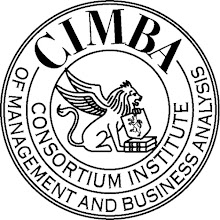
By Ted Frederickson
One funky piece of art captivated my wife and me during a recent visit to the Pompidou Centre, a modern art museum in Paris. Created by Chinese artist Cai Guo-Qiang, the 29-foot-long airplane constructed mostly of bamboo hung from the ceiling, with four whirring electric fans (where propellers should be) blowing streams of paper backwards, simulating flight.
We were puzzled by its title, “Bon Voyage: 10,000 Collectables from the airport, 2004,” until we noticed light reflecting from pieces of metal embedded in the plane. When we looked closer, we saw scissors, toenail trimmers, corkscrews, box cutters, hunting knives and other forbidden items that the exhibit explained had been seized from passengers boarding flights at the Sao Paulo, Brazil, airport. The exhibit was lacking in color, except for familiar rectangles of red throughout the wings and fuselage—the ubiquitous Swiss Army Knives that many men carry. I felt mine as I stared up at hundreds forever orphaned from their owners’ pockets.
Little did I realize that three weeks later, I would be approaching the metal detector and x-ray machines at t
 he airport in Malta, fumbling through my pocket for boarding pass and passport, feeling instead (to my horror) my treasured Swiss Army Knife. Normally, I take great care to put my knife in checked luggage, where it is legal. I’ve carried the same knife since college, using it to open good beers (they don’t have twist-offs), make quick repairs with its phillips and regular screwdrivers, or cut up fruit and cheese for impromptu picnics with my wife.
he airport in Malta, fumbling through my pocket for boarding pass and passport, feeling instead (to my horror) my treasured Swiss Army Knife. Normally, I take great care to put my knife in checked luggage, where it is legal. I’ve carried the same knife since college, using it to open good beers (they don’t have twist-offs), make quick repairs with its phillips and regular screwdrivers, or cut up fruit and cheese for impromptu picnics with my wife.With the baggage already checked, and the Ryanair flight that would take us back to the Venice-Treviso airport already loading, I quickly whispered my situation to my wife. She expressed sympathy for my impending loss, then panic when I informed her that I was determined to find a way to slip it through security. She had visions of the metal detector going off as I walked through, or the uniformed woman intently studying carry-on bags as they traveled through the X-ray, nodding ominously to an armed policeman nearby and pointing at me.
I needed a plan to fool airport security—not to smuggle a weapon onboard for evil purposes, but to avoid losing a knife that accompanied and served me well for 39 years. I veered away from the line to the last bathroom outside the gate. I knew I couldn’t keep the knife in my pocket, because even a small belt buckle will set off the metal detector. So I opened my suitcase, took out my metal-rimmed sunglasses, aligned my knife against the thick top rim of the glasses, then slid them tightly back into the case. I carefully positioned the case so that when the suitcase passed through the X-ray machine, the thin edge of the knife matched the rim of the glasses rather than showing the outline of the blades.
When I returned to the line waiting at the security checkpoint, Merrilee gave me “the look” that husbands know means disapproval. This look had an added p.s. with an exclamation point: You are on your own, Bud, and would you please keep some distance from me!
I took off my shoes, watch, ring and belt; emptied the keys, coins and wallet from my pockets and loaded them along with my jacket into the plastic tray; then set the tray on the conveyor, followed by my suitcase—carefully positioned on its side.
As I watched my wife collect her things on the other side of the conveyor belt and quickly walk away, I stepped through the metal detector, then watched from the other side as the woman stopped the conveyor, studied the screen for one long moment —then let my suitcase pass through.
As I loaded my suitcase into the storage compartment above my seat, I couldn’t help thinking about the message the artist sent with his clever piece at the Pompidou. While those 10,000 collectables (including hundreds of Swiss Army knives like mine) never made it onto their flights, they flew again aboard his bamboo plane. My knife beat the odds and flew Ryanair to Venice. It is still in my pocket.

Ted Frederickson, a University of Kansas professor of journalism, taught in the CIMBA undergraduate program in spring, 2009. He now acknowledges that his wife was right. He does NOT recommend that others follow his lead.

No comments:
Post a Comment